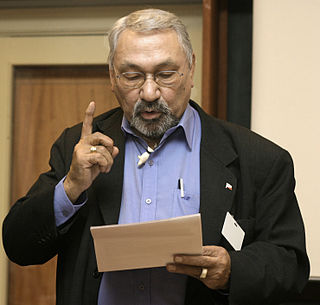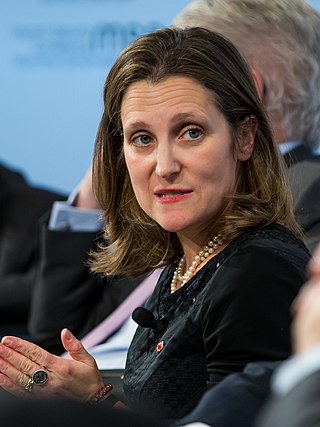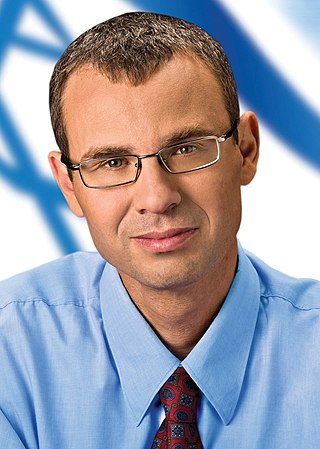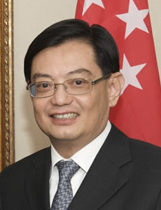
Francis Michael Forde was an Australian politician who served as the 15th prime minister of Australia from 6 to 13 July 1945, holding office as the deputy leader of the Australian Labor Party (ALP). He was prime minister in a caretaker capacity directly following the death of prime minister John Curtin, and is the shortest-serving prime minister in Australia's history.

Jonathan Jakob Jørgen Otto Motzfeldt was a Greenlandic priest and politician. He is considered one of the leading figures in the establishment of Greenland Home Rule. Jonathan Motzfeldt was the first prime minister of Greenland. He was Greenland's prime minister from 1979 until 1991 and again from 1997 until 2002. He was Greenland's longest serving prime minister and won the most elections of any prime minister of Greenland. He is considered a centre-left politician and Greenland became a recognized country during his tenure.

The Prime Minister of Sweden is the head of government of Sweden. The prime minister and their cabinet exercise executive authority in the Kingdom of Sweden and are subject to the Parliament of Sweden. The prime minister is nominated by the Speaker of the Riksdag and elected by the chamber by simple majority, using negative parliamentarianism. The Riksdag holds elections every four years, in the even year between leap years.

The deputy prime minister of Canada is a minister of the Crown and a member of the Canadian Cabinet. The office is conferred at the discretion of the prime minister and does not have an associated departmental portfolio. Canadian deputy prime ministers are appointed to the Privy Council and styled as the Honourable, a privilege maintained for life.

The prime minister of the Netherlands is the head of the executive branch of the Government of the Netherlands. Although the monarch is the de jure head of government, the prime minister de facto occupies this role as the officeholder chairs the Council of Ministers and coordinates its policy with the rest of the cabinet. The current prime minister has been Mark Rutte since 14 October 2010, whose fourth cabinet was inaugurated on 10 January 2022.

The deputy prime minister of New Zealand is the second most senior member of the Cabinet of New Zealand. The officeholder usually deputises for the prime minister at official functions. The current deputy prime minister is Carmel Sepuloni.
A deputy prime minister or vice prime minister is, in some countries, a government minister who can take the position of acting prime minister when the prime minister is temporarily absent. The position is often likened to that of a vice president, as both positions are "number two" offices, but there are some differences.

The deputy prime minister of Australia is the deputy chief executive and the second highest ranking officer of the Australian Government. The office of deputy prime minister was officially created as a ministerial portfolio in 1968, although the title had been used informally for many years previously. The deputy prime minister is appointed by the governor-general on the advice of the prime minister. When Australia has a Labor government, the deputy leader of the parliamentary party holds the position of deputy prime minister. When Australia has a Coalition government, the Coalition Agreement mandates that all Coalition members support the leader of the Liberal Party becoming prime minister and mandates that the leader of the National Party be selected as deputy prime minister.

The deputies of the prime minister of Israel falls into four categories; Acting Prime Minister, Deputy Prime Minister, Vice Prime Minister and Alternate Prime Minister. Vice Prime Minister is honorary and extra-constitutional position, but entitle the office-holder to a place in the cabinet. Deputy Prime Minister, Designated Acting Prime Minister, and Alternate Prime Minister are constitutional positions.

In the Parliament of Australia, the Leader of the House is the government minister responsible for the management of government business in the House of Representatives, including the order in which the Government's agenda is to be dealt with, tactical matters in reaction to impediments to such management, negotiation with the Opposition's counterpart about the order in which bills are to be debated, and the time allotted for debates. The position is currently held by Tony Burke since June 2022.

The deputy prime minister of Singapore is the deputy head of government of the Republic of Singapore. The incumbent deputy prime ministers are Heng Swee Keat and Lawrence Wong, who took office on 1 May 2019 and 13 June 2022 respectively.

The Deputy Prime Minister of Albania, officially styled the Deputy Prime Minister of the Republic of Albania, is the deputy head of government of Albania. In the absence of the prime minister, the deputy prime minister takes over the functions of chairman of the council of ministers. The office is the second senior minister of the cabinet in the executive branch of the government in the parliamentary system in the Republic of Albania.
An acting prime minister is a cabinet member who is serving in the role of prime minister, whilst the individual who normally holds the position is unable to do so. The role is often performed by the deputy prime minister, or by another senior minister.

General elections were held in Greenland on 2 June 2009. Prime Minister Hans Enoksen announced the election date on 15 April 2009, stating that he would prefer for a newly elected parliament to administer Greenland when the self-government reform took effect on 21 June 2009. The reform gave more power to the Greenlandic parliament with decisions on most issues being devolved to the parliament but defence and foreign affairs remaining under the control of Denmark.
Naalakkersuisut is the chief executive body and the government of Greenland since the island became self-governing in 1979. An autonomous territory of the Kingdom of Denmark, takes place in a framework of a parliamentary representative democratic territory, whereby the premier leads the cabinet, and of a multi-party system.
Anda Uldum or Andreas René Uldum is a former Greenlandic politician and a former member of the Inatsisartut. He was the leader of the Greenland party Demokraatit. 2015 he became Minister of Finance and Raw Materials when his party the Democrats entered a coalition with the social democratic Siumut and another centre-right party, Atassut. In 2016, he resigned his post and left politics due to health issues. He later moved to Denmark.

The Leader of the House is responsible for managing and scheduling Government business in the Jatiya Sangsad. The office is always held by the Prime Minister of Bangladesh. The Leader of the House and the Deputy Leader are elected by a majority of the members of the parliament.

The Australian Labor Party held a leadership election on 12 July 1945, following the death of Prime Minister John Curtin. Treasurer Ben Chifley won an absolute majority on the first ballot, defeating three other candidates: deputy leader and interim prime minister Frank Forde, navy minister Norman Makin, and attorney-general H. V. Evatt.













